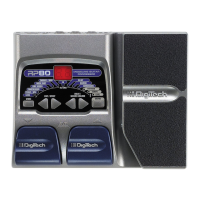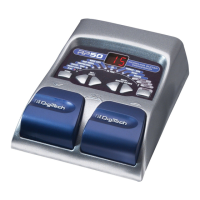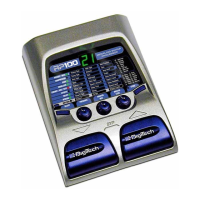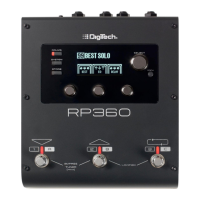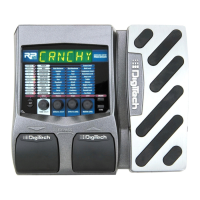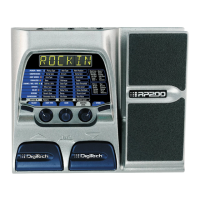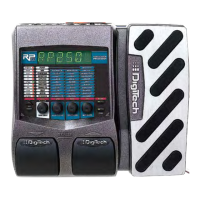ing up and down. This means that when you begin to play, the flanger may be at the top, bottom, or
any random point of the sweep. With a Triggered Flanger, every time the signal exceeds the Sensitivity
level setting, the Flanger will begin at the point of the sweep that you designate with the value of the
LFO Start Parameter.
Parameter 1 - The Number 2 Knob adjusts the rate (Speed) of the modulation. Ranges from 1 to 99.
Parameter 2 - The Number 3 Knob adjusts the strength the signal must be (Sensitivity) in order to
trigger the Flanger. Ranges from 1 (requiring strong signals to trigger) to 99 (triggers
with weak signals).
Parameter 3 - The Number 4 Knob selects the point at where the Flanger will begin it’s sweep (LFO
Start). Ranges from 0 to 99.
Mod Level - The Number 5 Knob controls the mix of wet and dry signal. Ranges from 0 (all dry) to
99 (all wet).
Phaser
A Phaser splits the incoming signal, and then changes the phasing of the signal. This signal is then
taken in and out of phase and mixed back in with the original signal. As the phasing changes, different
frequencies get canceled resulting in a warm sort of twisting sound.
Parameter 1 - The Number 2 Knob adjusts the rate (Speed) of the modulating phase. Ranges from 1
to 99.
Parameter 2 - The Number 3 Knob adjusts the intensity (Depth) of the modulation. Ranges from 1
to 99.
Parameter 3 - The Number 4 Knob adjusts the amount of effected signal returned to the input of the
Phaser (Regeneration). Ranges from 1 to 99.
Mod Level - The Number 5 Knob controls the mix of wet and dry signal. Ranges from 0 (all dry) to
99 (all wet).
Triggered Phaser
A Triggered Phaser is the same sound as a regular Phaser but allows you to choose the starting point
of the Phaser sweep. In a regular Phaser, the low frequency oscillator (LFO) is continually changing
the phase of the signal. This means that when you begin to play, the phaser may be at the any ran-
dom point of the phase. With a Triggered Phaser, every time the signal exceeds the Sensitivity level
setting, the Phaser will begin at the point of phasing that you designate with the value of the LFO
Start Parameter.
Parameter 1 - The Number 2 Knob adjusts the rate (Speed) of the modulating phase. Ranges from 1
to 99.
Parameter 2 - The Number 3 Knob adjusts the strength the signal must be (Sensitivity) in order to
trigger the Phaser. Ranges from 1 (requiring strong signals to trigger) to 99 (triggers
with weak signals).
Parameter 3 - The Number 4 Knob selects the point at where the Phaser will begin it’s sweep (LFO
Start). Ranges from 0 to 99.
Mod Level - The Number 5 Knob controls the mix of wet and dry signal. Ranges from 0 (all dry) to
99 (all wet).
Tremolo
A Tremolo effect modulates the volume of the signal at an even rate.
Parameter 1 - The Number 2 Knob adjusts the rate (Speed) at which the volume modulates. Ranges
from 1 to 99.
Parameter 2 - The Number 3 Knob adjusts the intensity (Depth) of the modulating volume. Ranges from 0 to 99.
16
Creating Presets
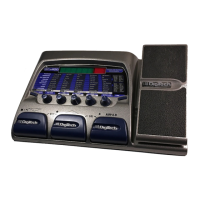
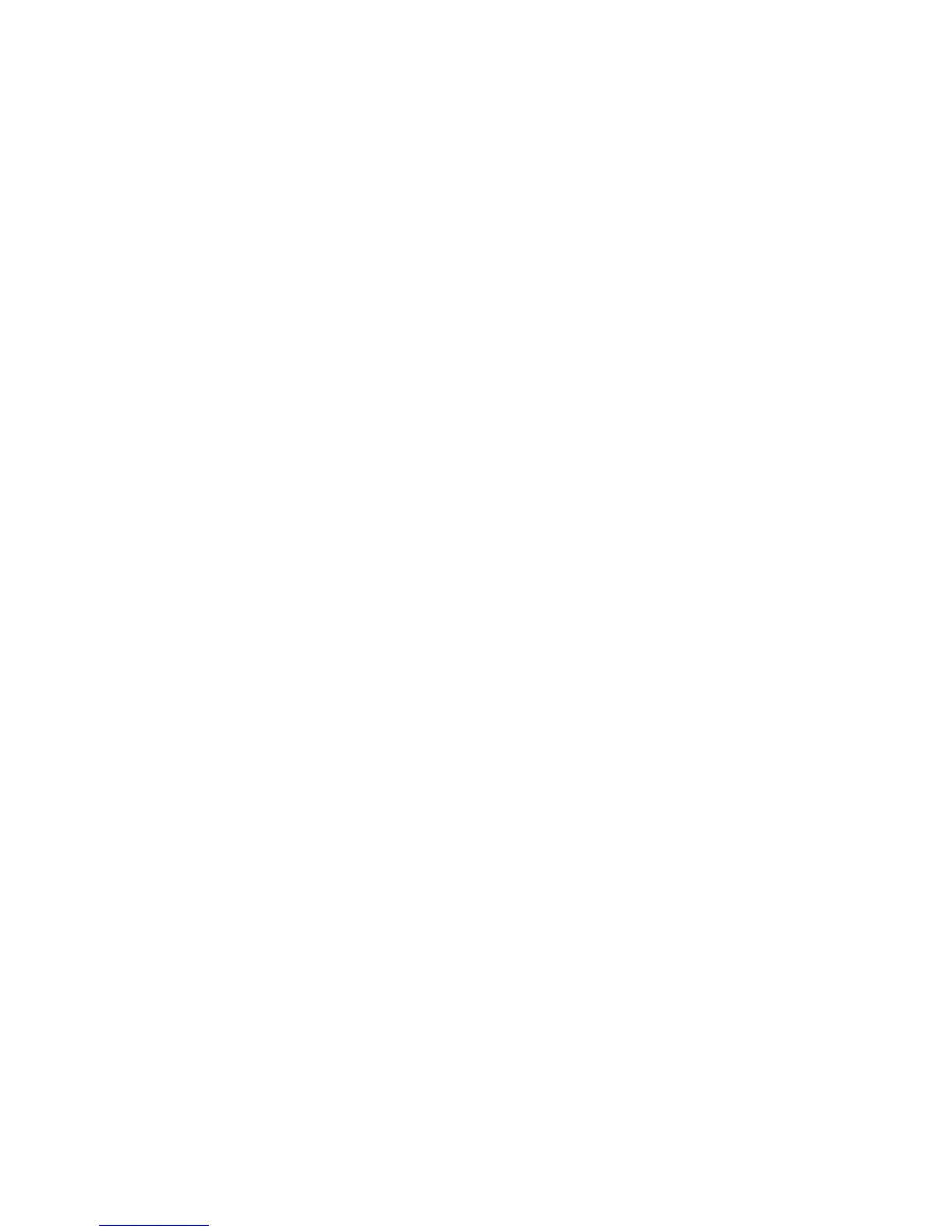